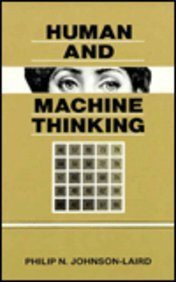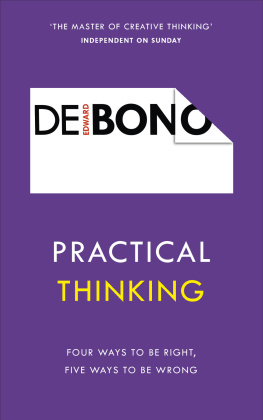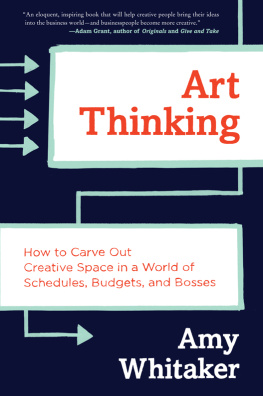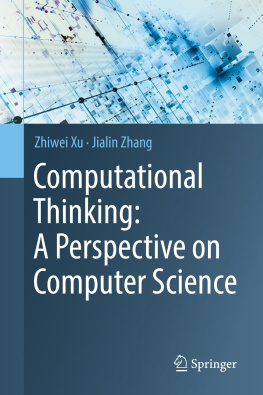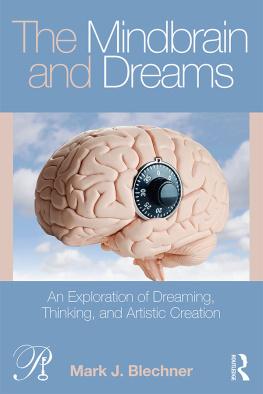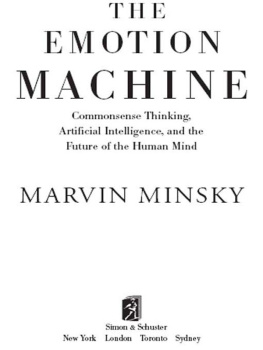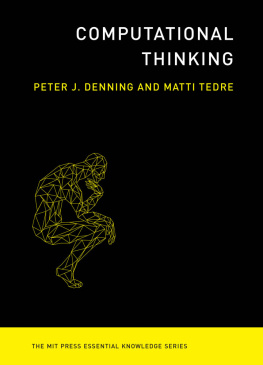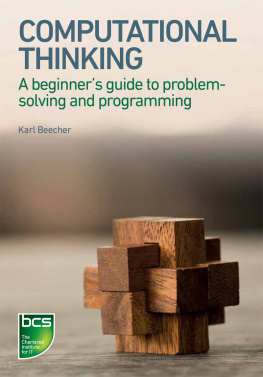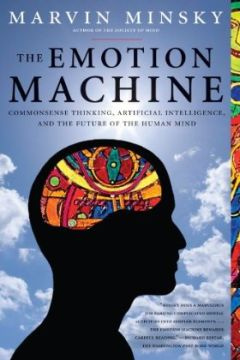Human and Machine Thinking
Philip N. Johnson-Laird Princeton University
LAWRENCE ERLBAUM ASSOCIATES, PUBLISHERS 1993 Hillsdale, New Jersey Hove and London
-iii-
Copyright 1993, by Lawrence Erlbaum Associates, Inc.
All rights reserved. No part of the book may be reproduced in any form, by photostat, microform, retrieval system, or any other means, without the prior written permission of the publisher.
Lawrence Erlbaum Associates, Inc., Publishers 265 Broadway Hillsdale, New Jersey 07642
Library of Congress Cataloging in Publication Data
Johnson-Laird, P. N. ( Philip Nicholas), 1936- Human and machine thinking / by Philip N. Johnson-Laird. p. cm. -- ( John M. MacEachran memorial lecture series: 1990) Includes bibliographical references and indexes. ISBN 0-8058-0921-X 1. Human information processing. 2. Thought and thinking. 3. Artificial intelligence. I. Title. II. Series. BF444.J64 1992 153.43 -- dc20 92-17170 CIP
Printed in the United States of America 10 9 8 7 6 5 4 3 2
-iv-
"To be a machine, to feel, to think..."
-- La Mettrie ( 1748)
-v-
John M. MacEachran Memorial Lecture Series
The Department of Psychology at the University of Alberta inaugurated the MacEachran Memorial Lecture Series in 1975 in honor of the late John M. MacEachran. Professor MacEachran was born in Ontario in 1877 and received a Ph.D. in Philosophy from Queen's University in 1905. In 1906 he left for Germany to begin more formal study in psychology, first spending just less than a year in Berlin with Stumpf, and then moving to Leipzig, where he completed a second Ph.D. in 1908 with Wundt as his supervisor. During this period he also spent time in Paris studying under Durkheim and Henri Bergson. With these impressive qualifications the University of Alberta was particularly fortunate in attracting him to its faculty in 1909.
Professor MacEachran's impact has been significant at the university, provincial, and national levels. At the University of Alberta he offered the first courses in psychology and subsequently served as Head of the Department of Philosophy and Psychology and Provost of the University until his retirement in 1945. It was largely owing to his activities and example that several areas of academic study were established on a firm and enduring basis. In addition to playing a major role in establishing the Faculties of Medicine, Education and Law in the Province, Professor MacEachran was also instrumental in the formative stages of the Mental Health Movement in Alberta. At a national level, he was one of the founders of the Canadian Psychological Association and also became its first Honorary President in 1939. John M. MacEachran was indeed one of the pioneers in the development of psychology in Canada.
Perhaps the most significant aspect of the MacEachran Memorial Lecture Series has been the continuing agreement that the Department of Psychology at the University of Alberta has with Lawrence Erlbaum Associates, Publishers, Inc., for the publication of each lecture series. The following is a list of the Invited Speakers and the titles of their published lectures:
-vi-
| 1975 | Frank A. Geldard ( Princeton University) Sensory Saltation: Metastability in the Perceptual World |
| 1976 | Benton J. Underwood ( Northwestern University) Temporal Codes for Memories: Issues and Problems |
| 1977 | David Elkind ( Rochester University) The Child's Reality: Three Developmental Themes |
| 1978 | Harold Kelley ( University of California at Los Angeles) Personal Relationships: Their Structures and Processes |
| 1979 | Robert Rescorla ( Yale University) Pavlovian Second-Order Conditioning: Studies in Associative Learning |
| 1980 | Mortimer Mishkin ( NIMH-Bethesda) Cognitive Circuits (unpublished) |
| 1981 | James Greeno ( University of Pittsburgh) Current Cognitive Theory in Problem Solving (unpublished) |
| 1982 | William Uttal ( University of Michigan) Visual Form Detection in 3-Dimensional Space |
| 1983 | Jean Mandler ( University of California at San Diego) Stories, Scripts, and Scenes: Aspects of Schema Theory |
| 1984 | George Collier and Carolyn Rovee-Collier ( Rutgers University) Learning and Motivation: Function and Mechanism (unpublished) |
| 1985 | Alice Eagly ( Purdue University) Sex Differences in Social Behavior: A Social-Role Interpretation |
| 1986 | Karl Pribram ( Stanford University) Brain and Perception: Holonomy and Structure in Figural Processing |
| 1987 | Abram Amsel ( University of Texas at Austin) Behaviorism, Neobehaviorism, and Cognitivism in Learning Theory: Historical and Contemporary Perspectives |
| 1988 | Robert S. Siegler and Eric Jenkins ( Carnegie-Mellon University) How Children Discover New Strategies |
| 1989 | Robert Efron ( University of California, School of Medicine) The Decline and Fall of Hemispheric Specialization |
| 1990 | Timothy A. Salthouse ( Georgia Institute of Technology) Mechanisms of Age--Cognition Relations in Adulthood |
| 1991 | Philip N. Johnson-Laird ( Princeton University) Human and Machine Thinking |
Eugene C. Lechelt, Coordinator MacEachran Memorial Lecture Series
Sponsored by the Department of Psychology, The University of Alberta, in memory of John M. MacEachran, pioneer in Canadian psychology.
-vii-
[This page intentionally left blank.]
-viii-
Contents
| Prologue |
1 Deduction | Formal Rules of Inference | | The Mental Model Theory of Deduction | | Rules Versus Models | | Some Morals for Machines | | Conclusions |
|
2 Induction | Models and Specific Inductions | | General Inductions | | Can Concepts Be Learned? | | Concepts: A Theory at the Computational Level | | Concepts and the Design of the Human Inductive System | | Conclusions |
|
-ix-
3 Creation | What is Creativity? | | The Computational Architecture of Creativity | | Artistic Creativity | | Scientific Creativity | | Conclusions |
|
| Epilogue |
| References |
| Author Index |
| Subject Index |
-x-
Prologue
What is thinking? One answer is that it is what intervenes between perception and action. If it intervenes too much, then action may be postponed indefinitely: prudence in excess is paralysis, but thinking normally leads from one mental representation of the world to another in order to prepare the individual for the demands of life. This answer, from Kenneth Craik ( 1943), lies at the heart of Functionalism, the doctrine that what is crucial to thinking is not the physical make-up of the brain, not nerve, synapse, and neurotransmitter, but the organization and functioning of mental processes and representations. Of course, a knowledge of the neural processes of the brain may help us to understand the functional organization of thinking.
The simplest organisms, such as bacteria and protozoa, react physically to their immediate environment. A paramecium, for example, is a single- celled organism that swims through the water by the coordinated beating of its hairlike cilia. If it bumps into an obstacle, it backs off, and then swims away in a different direction. It is tempting to suppose that it has determined that its way is blocked and decided to set a different course. In fact, it forms no representation of the external world, and thinks not at all. The bump depolarizes its cell membrane, the ensuing chemical changes cause its cilia to reverse the direction of their power strokes, and so it swims in a reverse direction. As the membrane recovers, normal swimming resumes, with a probable change in course. The organism appears to move in a thoughtful way, but in reality it neither represents the world nor has any mental life.

